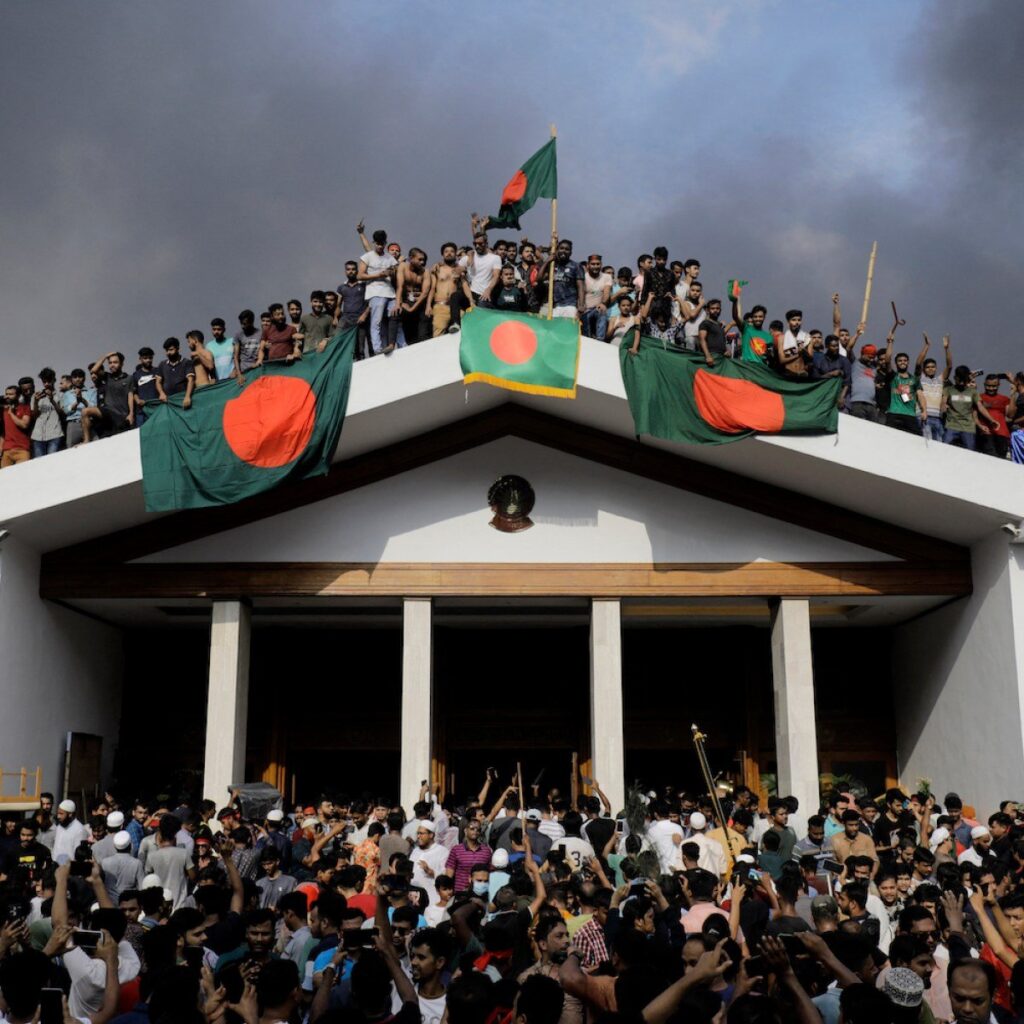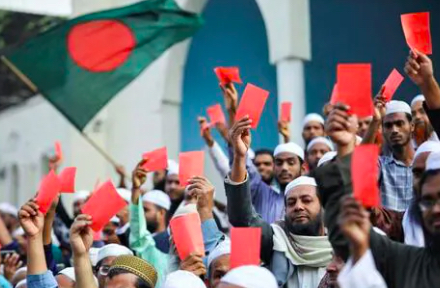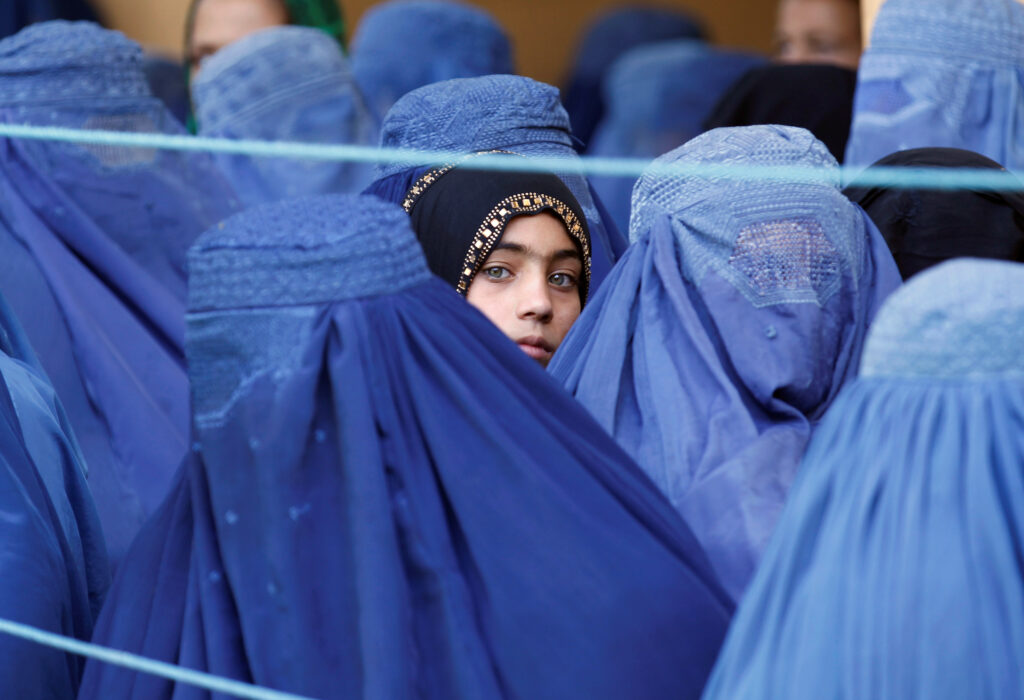MANTRAYA POLICY BRIEF#21: 15 AUGUST 2017
BIBHU PRASAD ROUTRAY
Abstract
A segment within the Kashmir militancy has turned global. Declaring itself a branch of the al Qaeda, this small team of militants are not just posing new challenges to the Indian security establishment, but also to the Pakistan sponsored movement which aims at merger with Pakistan as Kashmir’s end objective.

(Graffiti in Srinagar declares the arrival of al Qaeda)
Today, anti-Indian dissent in Kashmir is partly indigenous, partly Pakistan sponsored, and a small part of it is radicalised and global, envisioning Kashmir’s future being a part of an Islamic caliphate. The protracted history of Pakistan-sponsored militancy’s attempts to usurp the indigenous movement is being challenged by the newly established third stream that seeks to convert the separatist militancy into a transcendental religious mission with a pan-Islamist goal. Apart from being a part of the large issue of militancy that New Delhi must tackle to stabilise Kashmir, this third stream pose an existential challenge to the pro-Pakistan separatists and militants. In fact, its growth can derail both the moralistic indigenous movement which attempts to highlight the alienation among the Kashmiris as a rasion d’etre for the demand of independence and the Pakistan sponsored separatist struggle that uses a huge array of instruments of violence to outmanoeuvre New Delhi.
In the Pipeline
The thought process behind the third stream, which intends Kashmir to be a part of the global Islamic caliphate, has been evolving through small innocuous acts like incidents of waving of the flag of the Islamic State, since 2015. While the government, the separatists, and the strategic community dismissed those incidents as inconsequential, such aspirations have quietly grown to nurture a small band of followers. Despondent with the directions of militancy and its rather gloomy objective of making Kashmir a part of Pakistan, this new stream of militancy aims at providing a new lease pf life to the struggle for independence, although the prospects of its success are as hopeless as the movement supported by the Pakistani agencies.
Hizb ul Mujahideen (HM) commander Zakir Rashid Bhat alias Zakir Musa was the first to renounce merger with Pakistan as the objective of the Kashmiris. In May 2017 he declared, “Our intention should be that, we have to achieve azadi (freedom) to establish Islamic rule and not for secular state. If we are fighting for secular state then my blood won’t be spilled for that purpose.” he said. Subsequently he threatened to publicly behead Hurriyat leaders, who insist that the movement is Kashmir is “political”.
His expulsion from HM notwithstanding, such declaration and public repudiation of the stand by the Pakistan based militant leadership and the separatist Hurriyat formalised the founding of the third stream of militancy in Kashmir. Musa went on to announce the arrival of the al Qaeda in Kashmir and appeared in a video in May 2017 under the al-Qaeda banner, “accusing Indian Muslims of cowardice, and calling on them to engage in jihad against the government”. In the last week of July, the al-Qaeda in the Indian subcontinent’s new affiliate for Kashmir, Ansar Ghazwat-ul-Hind, designated Musa as its chief. Among many of the quiet developments that are constantly taking place in the militancy landscape in the state, Abu Dujana, the Lashkar-e-Toiba (LeT) commander in South Kashmir, too had opted to be a part of the process that resents the corrupt LeT and HM leadership and their close association with the Pakistani state. Dujana’s personal and occupational feud with the LeT leadership may have precipitated his decision. The fact, however, is that the externally sponsored militancy which has tried its best to remain monolithic is facing an existential challenge from Musa and co.
The ‘Trap’ of Ansar Ghazwat-ul-Hind
“Do not fall into the trap of Ansar Ghazwat-ul-Hind”, warned Raiyaz Naikoo, commander of the HM, at the funeral of two militants in South Kashmir’s Tahab in the last week of July 2017. He rejected the call given by Zakir Musa and the arrival of al Qaeda in Kashmir. “Linking our struggle with Al-Qaeda and ISIS is a strategy to defame our struggle,” he said. “Pakistan flag is our flag,” said Naikoo in his speech. He also sought a louder response to his slogan: “Teri Jan, Meri Jan, Pakistan, Pakistan”.
There is significant support for Naikoo and the HM/LeT brand of militancy. However, their Pakistani masters realise the dangers of taking such support for granted. The arrival of the ‘third stream’ is a source of sorry to the separatists as well as the leadership of the militant outfits and their state sponsors within the Pakistan military. The separatist Hurriyat has described the al Qaeda’s arrival in Kashmir as a handiwork of the Indian agencies. Similarly, the HM leadership in Pakistan and the outfit’s current commander in Kashmir have sworn their loyalty to flag of Pakistan and not that of the al Qaeda and the Islamic State.
Zakir Musa is Real
The propaganda that al Qaeda in Kashmir is unreal and is a mere creation of Indian agencies would have gone unchallenged without Zakir Musa, who continues to lead a mini revolution of sorts to emphacise the importance of a pan Islamism emanating militant movement and disown any attempt to limit the end game to merely merging Kashmir’s future with Pakistan.
Musa’s support base may not be spectacular. According to a police official, his group “consists of perhaps half-a-dozen people, with few arms and sources of funding. He’s pretty much a dead man walking.” But on occasions he has managed to attract enough attention to trouble the separatists and the Pakistan based terrorists. Musa’s denunciation of Pakistan and his campaign against hoisting its flag during militant funerals in some parts of the valley including Srinagar has borne fruit on few occasions. On 19 July, group of youths tossed away the Pakistan flag during the funeral of Sajad Gilkar, a militant from downtown Srinagar and wrapped the body with a flag resembling that of the Islamic State. According to a report, hundreds of people defied curfew and gathered at Nowhatta for Gilkar’s funeral where they endorsed Bhat’s call.
The fact that Abu Dujana and Arif Lelhari had switched sides to join the al Qaeda and an announcement to that effect was in the offing, was confirmed by Musa and endorsed by a video statement by al Qaeda’s present chief Ayman al Zawahiri. “When Dujana understood the right path and joined our ranks, there were some self-styled leaders of jihad in Pakistan who caused many difficulties in their way. Martyr Arif, also had to go through a number of difficulties, but they both fought till their last breath in the way of Allah”, Musa said. Musa’s growing stature and the line he toes makes him a thorn in the flesh for the LeT and/or the HM.
Counter-Insurgency Successes
In the first week of June 2017, the Indian Army released a list of 12 most dreaded terrorists active in the Kashmir Valley. The list included LeT’s Abu Dujana, HM’s Riyaz Naikoo and Zakir Musa. Till the time of writing of this piece, five of these 12 had already been killed in separate encounters. More than 120 terrorists had been killed this year, the highest in the last seven years. Although killing of terrorists alone may not finish militancy, New Delhi believes that making the militant movement headless, even for a while, will allow it the opportunity to undertake other measures. Less militancy would necessarily mean fewer encounters and less dead bodies of militants for the public to rally around.
Reports have indicated that the security forces would continue pursuing a hardline approach on militancy in Kashmir. High-value terrorists like Zakir Musa and LeT’s Abu Ismail would remain primary targets. Abu Ismail (who interestingly did not figure in the list of 12 most wanted terrorists released in June 2017) is believed to be the mastermind behind the 10 July 2017 attack on the pilgrims of the Amarnath Yatra and is the new Kashmir division chief of LeT.
On 9 August a brief afternoon operation by the security forces led to the killing of three militants affiliated to Zakir Musa-led Ansar Ghazwat-ul Hind in Tral area of south Kashmir’s Pulwama district. From a counterinsurgency perspective, however, keeping Zakir Musa alive, at least for the time being, would make sense. While his minimal contribution to the level of militancy would not bother the security establishment, his repeated statements vowing for an Islamic Kashmir and his ability to split and weaken the Pakistani sponsored militancy could be of some use to the security forces.
(Bibhu Prasad Routray is the Director of MISS. This analysis has been published as part of Mantraya’s ongoing “Mapping Terror and Insurgent Network” and “China in South Asia” projects. All Mantraya publications are peer-reviewed.)




